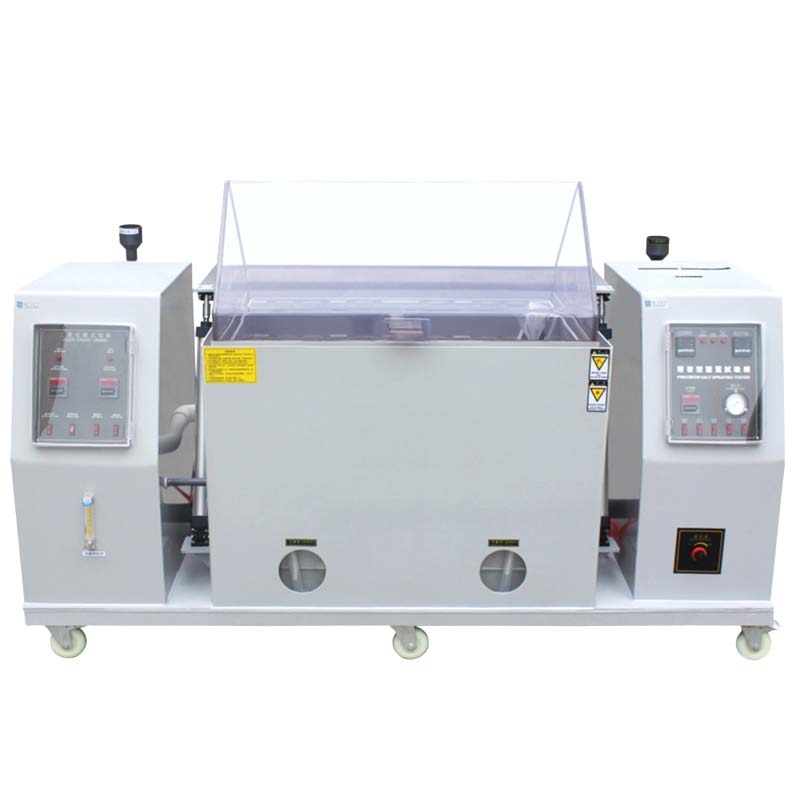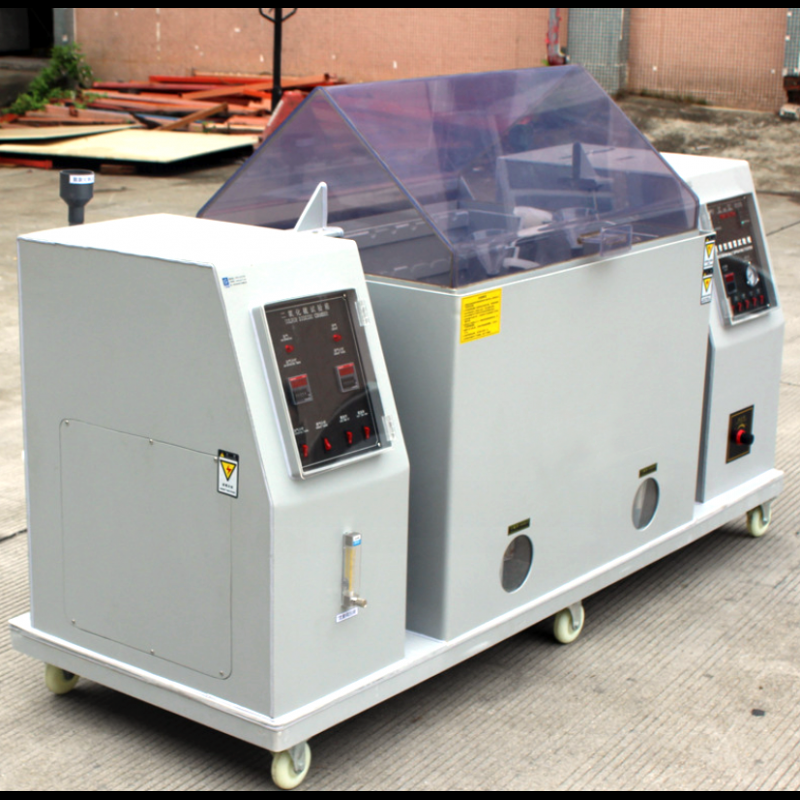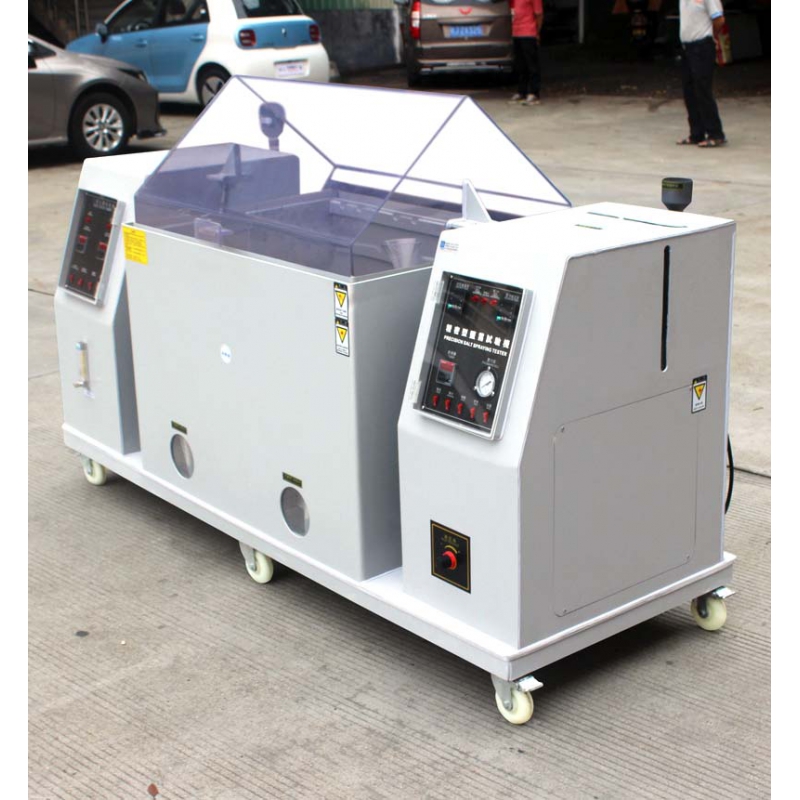Equipment summary:
This test equipment simulates corrosion tests in artificial environments and is suitable for determining the adaptability of electrical and electronic products and their materials under chemical corrosion environmental conditions, as well as for testing the quality of metal materials with or without corrosion protection;
Suitable for rapid analysis of phenomena such as discontinuities, pores, and damage in organic and inorganic coatings in anti-corrosion tests. In addition, for quality control purposes, comparisons can be made between samples coated with the same coating;
The salt spray test is particularly suitable for detecting discontinuities such as small pores and other defects in certain metal, organic, anodized, and conversion coatings, where
1. Neutral salt spray test (NSS) is applicable to metals and their alloys, metal coatings (anode and cathode), conversion coatings, anodized coatings, and organic coatings on metal materials;
2. The acetic acid salt spray test (AASS) and the copper accelerated acetic acid salt spray test (CASS) are particularly suitable for testing decorative coatings of copper+nickel+chromium, or nickel+chromium; Also suitable for testing anodized coatings on aluminum;
3. Test method for high concentration so2 test;
Machine parameters:
|
Internal volume |
108L/405L/CUSTOM |
|
Inner box size (mm) |
600*450*400/900*500*600 (excluding inclined top height) |
|
top inclined top has an angle |
100 ° |
|
height of top |
375MM |
|
Power supply |
AC 220V, 50Hz |
|
Maximum power |
2.5kw |
|
Maximum current |
12A (it is recommended that the switch capacity is not less than 20A, and the distance between the switch and the equipment when connected to power is less than 2.5 meters) |
|
Temperature range |
RT~50°C |
|
Saturation bucket temperature range |
RT~63°C |
|
Temperature deviation |
±1°C |
|
Temperature fluctuation |
± 0.5°C |
|
SO2 test conditions |
In the first stage, the ambient temperature is 40 ° C ± 3C, and the relative humidity is about 100% RH (condensation water is generated on the sample), including preheating for 8 hours.
In the second stage, stop heating, open the test chamber or ventilate it for 16 hours, including opening the test chamber or ventilation valve for cooling.
Unless otherwise specified, the test cycle should be prioritized from the following cycles: 1,2,5,10,15,20 cycles, with one cycle lasting 24 hours. |
|
The concentration of so2 |
0.05%~1% adjustable |
|
Salt spray settling volume |
1~2ml/h/80cm (collected for at least 16 hours, take the average value) |
|
spray pressure |
70~170Kpa |
Meet the testing methods:
1) GB/T2423.17-2008/IEC 60068-2-11-1981 Salt Spray Test Method
2) ASTM B117-2009 Salt Spray Test
3) JIS H8502 Salt water spray test method
4) GB/T10125-2012/ISO 9227-2006 Salt water spray test method
5) GB-T5170.8-2008 Inspection methods for environmental testing equipment for electrical and electronic products - Salt spray testing equipment
6) GB/T5170.11-2008 Inspection methods for corrosive gas testing equipment
7) GB/T10587-2006 Technical Conditions for Salt Spray Test Chamber
8) GB/T2423.3-2005 Test standard for high concentration sulfur dioxide
9) DIN 50188-1997 Test for condensation water in atmospheric environments containing sulfur dioxide - alternating climate











